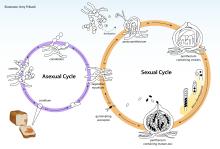Filter my results


Established in 1950, the Planned Parenthood Center of Tucson provided Arizona women with family planning resources until 1977, when it expanded to…
OrganizationSanger, Margaret, 1879-1966ContraceptionPlanned Parenthood Federation of AmericaInfertility
In Jeter v. Mayo, the Court of Appeals of Arizona in 2005 held that a cryopreserved, three-day-old pre-embryo is not a person for purposes of Arizona…
LawCryopreservationEmbryo transplantationFrozen human embryosFertilization in Vitro
The Family Planning Services and Public Research Act of 1970, often called Title X Family Planning Program, is a US federal law that provides federal…
LawFamily PlanningFamily planning--Law and legislationPopulation PolicyTitle X Family Planning Program (U.S.)
Margaret Higgins Sanger advocated for birth control in the United States and Europe during the late nineteenth and early twentieth centuries.…
Planned Parenthood Federation of AmericaBirth ControlContraceptionReproductive RightsArizona
Margaret Goldwater advocated for birth control and reproductive rights in the United States during the twentieth century. Goldwater was a socialite…
Goldwater, Margaret, 1909-1985Sanger, Margaret, 1879-1966ContraceptionDiaphragms, VaginalAbortion
The Clinica Para Madres (Mother’s Clinic) opened in Tucson, Arizona, in December of 1934 as the first birth control clinic in Arizona. After moving…
OrganizationSanger, Margaret, 1879-1966ArizonaPlanned Parenthood Federation of AmericaContraception
The Mother's Health Clinic opened in Phoenix, Arizona, in 1937 and provided women in central Arizona with contraception and family planning resources…
OrganizationSanger, Margaret, 1879-1966ContraceptionArizonaDiaphragms, Vaginal
This illustration shows George Beadle and Edward Tatum's experiments with Neurospora crassa that indicated that single genes produce singl
Neurospora crassaMicrobiologyX-raysGeneticsEnzymes
This diagram shows the life cycle of Neurospora crassa, a mold that grows on bread. N.
Neurospora crassaMicrobiologyMicroscopyGrowthdevelopment
Between 1934 and 1945, George Beadle developed a hypothesis that each gene within the chromosomes of organisms each produced one enzyme.
CellsGeneticsEnzymesGenesAmino Acids